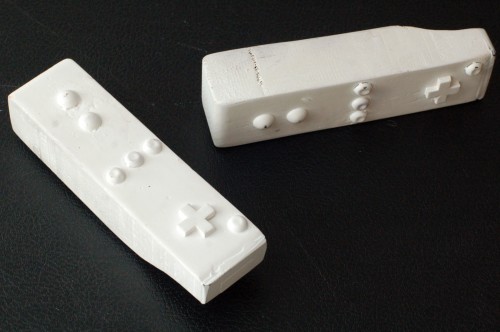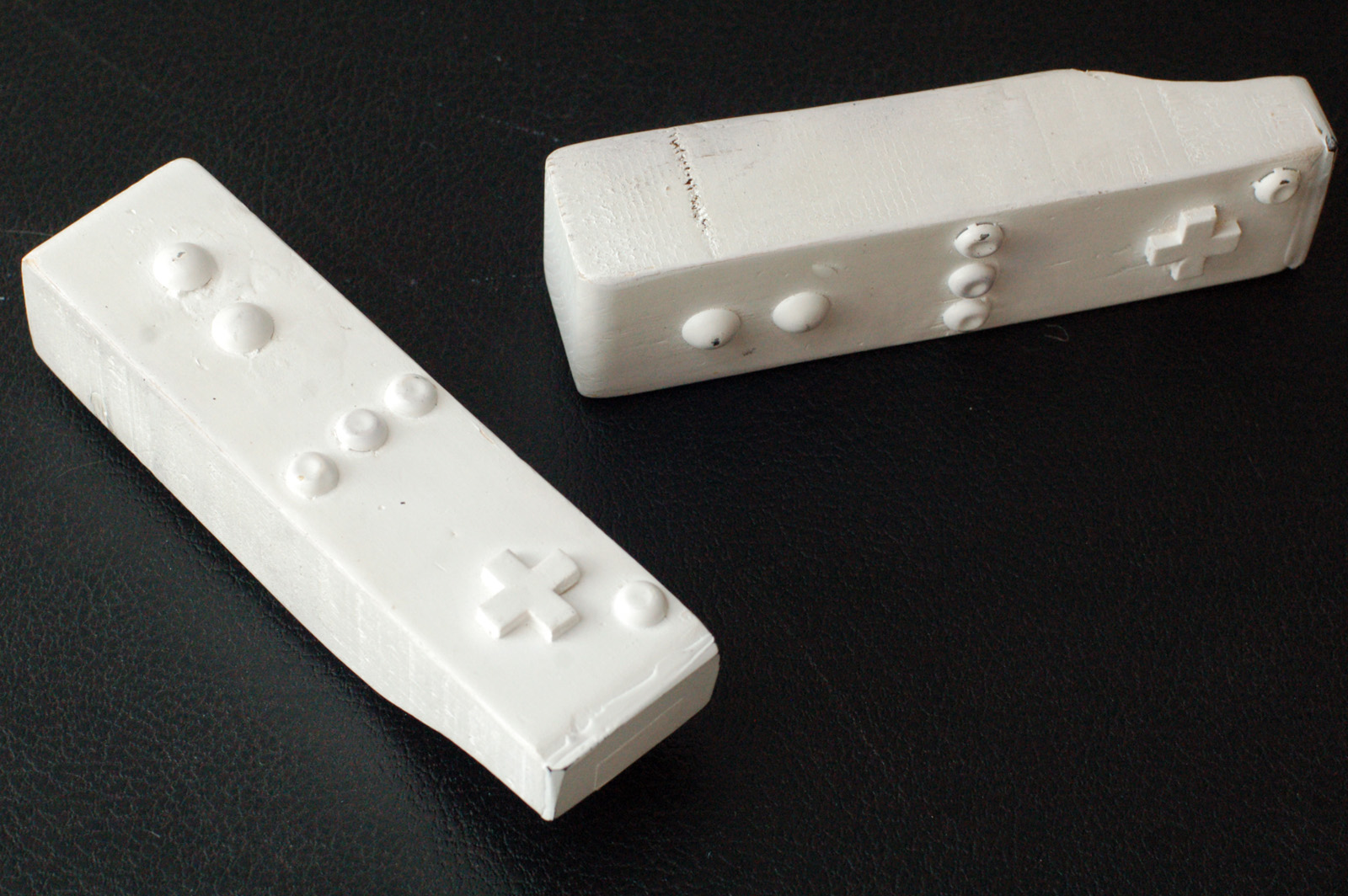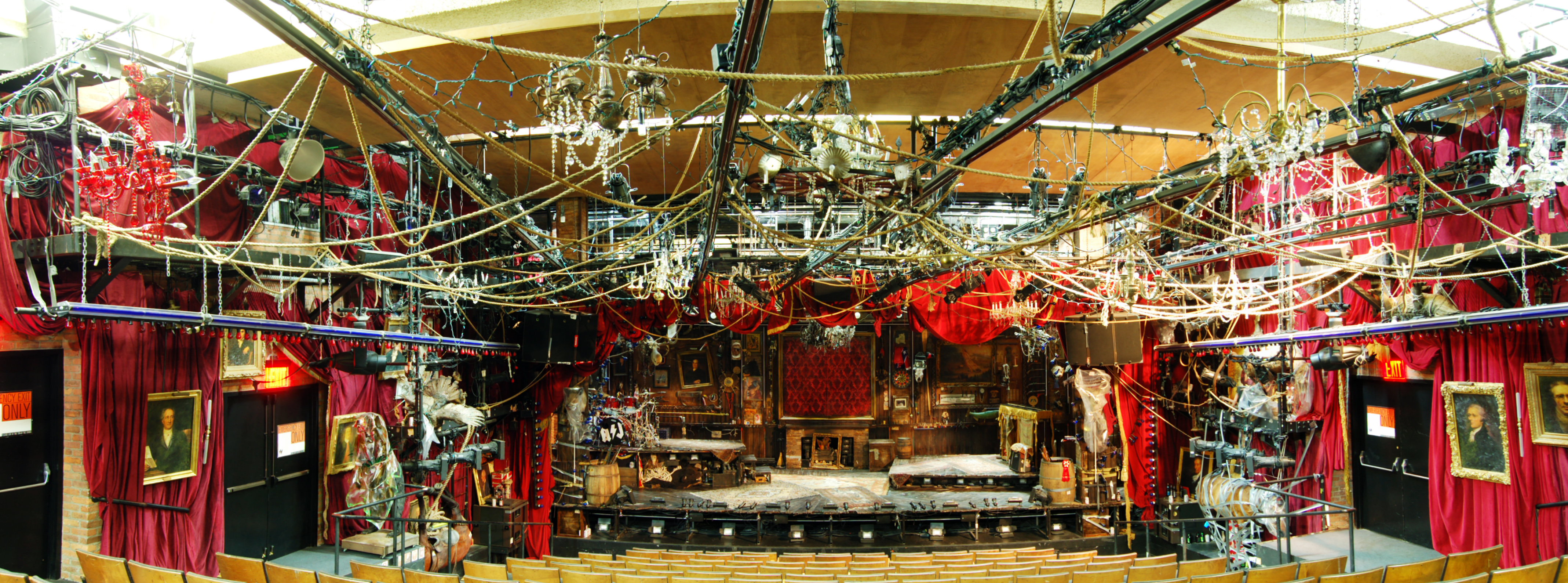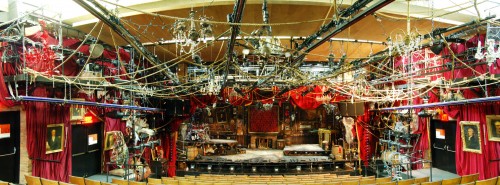
What, exactly, are we looking at? Fans of the Nintendo Wii may recognize these as vaguely resembling the remote used to play games on that system (known as the “Wiimote”).
Flashback a few years. I was working on the off-Broadway production of Bloody Bloody Andrew Jackson. Fans of the show will know that it has just a bit of set dressing, so you can imagine that the props department had their hands full. We had made it past tech and into previews, but changes were still occurring. The various sight gags at the beginning of Act II (when Andrew Jackson has just become President and is in the White House) were still evolving. A note came down that they wanted to add Wiimotes for one of the background characters to be playing with. Easy enough, right?
Well, our budget was fairly shot at the moment. We couldn’t really justify the $40+ per Wiimote (they wanted two) for a background gig. We searched high and low for used ones, ones to borrow, and even broken ones. At one point, someone found “candy” versions (a fake Wiimote filled with candy), but these proved to be too diminutive for our purposes.
“Hey,” I said. “I can make something really quick, so they at least have something in their hands while we continue searching.” I cut some shapes out of a 2×4, added some upholstery tacks as buttons and a small cross cut out of MDF for a directional pad, gave it a coat of gloss white spray paint, and called it good.
We ended up running out of time to find better ones. No one gave us any notes to improve these “stand-ins”. Opening night came. Watching the show, you couldn’t really see what was in the actor’s hands during this scene, even if you knew to look for them.
Flash forward. The show transfers to Broadway. All the props get recorded, packed and trucked off. I get tickets to see it. I pay attention to the beginning of Act II to pick up on any changes. The Wii gag is still there, but I can’t make out the props. “It’s Broadway,” I think. “They probably just bought two Wiimotes with their big budget.”
Flash forward again. It’s been over a year since the show closed and the props are still in storage. My boss pushes to get them back as the chances of a transfer diminish. After several go-arounds, he finally arranges for a trip out to the storage facility to pick up some of the items to bring back to our stock. Most of the hand props are packed into a few boxes, and we don’t really know what is in them (the boxes are labelled “action props”, which is Broadway’s term for “hand props”).
We unpack the boxes and guess what I find? Hint: It wasn’t a pair of “real” Wiimotes.
I am not sure what the moral of the story is. It is certainly an interesting side note to add to the list of strange ways and circuitousness routes which objects take on their way to the Broadway stage. Perhaps it is also a small reminder that you should always do your best work, because you never know where a prop may end up. Perhaps, too, it reveals how “theatre magic” can be created even with decidedly un-magical items.
Or maybe it’s just a funny-looking prop with an interesting story.





